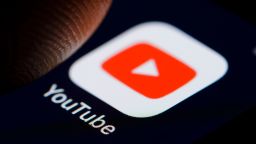Ukrainian Instagram influencers are now warzone witnesses and urban warfare experts are tweeting tips to Ukrainian fighters, CNN’s chief media correspondent Brian Stelter said on “Reliable Sources” Sunday. But the onslaught of words and images is fueling a confusing media environment where disinformation is rampant.
Many are calling Russia’s invasion of Ukraine the TikTok war — users of the platform were actively posting about the military escalation even as Russian authorities were denying it. Many are also using social media outlets to become “anti-war activists,” Stelter said.
The news ecosystem is becoming increasingly complex, especially when you factor in Russia’s state-owned media.
David French, a senior editor at The Dispatch, said that social media is showing Americans just how “incredibly brutal” this war is, but those platforms don’t offer an overall strategic view, such as the positions of Russian forces or the real number of casualties.
“Each one of these TikTok videos is a tiny little snapshot of a tiny little moment of time, often without any other overlaying context,” French said. “And so you really would have to spend an enormous time with some real background to begin to piece together the TikTok jigsaw puzzle.”
French added that the immediacy of these social media feeds may have prompted Western nations to “fall into line quickly” on stricter sanctions.
“The inspirational nature of Ukrainian resistance that is shaming a lot of Western governments, quite frankly, into action,” French said.
Navigating information on social media
Stelter cited a prime example of misinformation being spread on social media— a video of Russian paratroopers shared on TikTok and Twitter that turns out to have been filmed in 2015.
Jane Lytvynenko, an investigative reporter and researcher specializing in disinformation, said few people understand information warfare as well as most Ukrainians.
“Propaganda is a part of every war,” Lytvynenko said. “And the point of propaganda coming out of Russia right now is to undermine Ukrainian narratives and to scare Ukrainian people,” she said.
Lytvynenko cautioned about reports of “Russian forces, Russian force movements and disinformation” on social media, which Ukrainian news outlets are debunking in real time.
The “fog of war” has descended upon Ukraine, Stelter said, making it more difficult to know what’s happening in communities even 20 miles outside of Kiev. French said we may not know for days or weeks the actual course of battle.
“I have a general rule, the more specific and dramatic the information, the more suspicion you should apply,” French, an Iraq War veteran, said. “Right now, the more reliable reports are going to be the more high level, more vague reports.”






